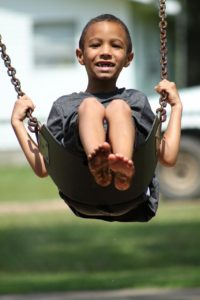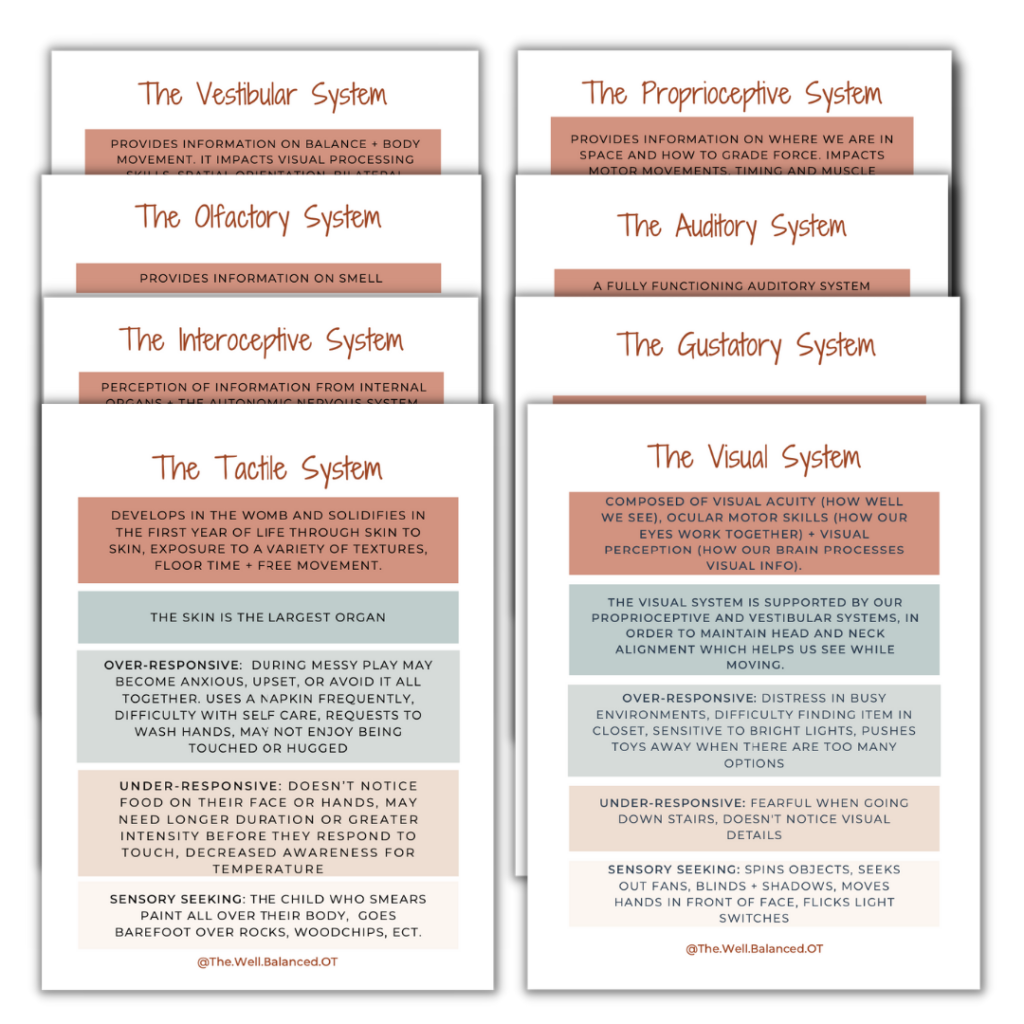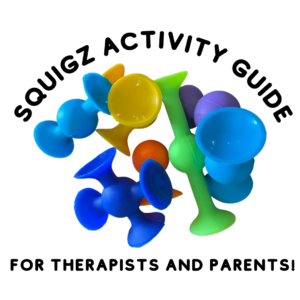In this post we’ll address what vestibular processing is and what it means to be under-reactive (or under-responsive) to this type of sensory input if we have challenges with sensory processing

What is Vestibular Input?
Our vestibular system is one of our 8 (yes, 8) sensory systems. This specific one controls our balance. It’s what helps us stay seated in our chair instead of falling to the floor. It helps us move against gravity instead of being plastered to the floor. The vestibular system is so connected to our other sensory systems that it actually impacts more than we think!
What Does it Mean to Under-Reactive to Vestibular Input?
When an individual has differences in their reactivity to sensory information we say they have challenges in sensory modulation. They can either be Over-Reactive or Under-Reactive. Today we are going to focus on Under-Reactivity.
Being under-reactive to sensory input means that it often takes a lot more input before their body reacts to it. These kids have a very high threshold and they need more input and intensity of input before they react to the sensation. The passive response is to do nothing. These kids might not realize their body is missing something or just don’t do anything about it. The active response is to seek it out (sensory seeking). The kids are the ones that are always on the go! They might be spinning, running everywhere, or fidgeting in their seat.

How do we know if a child is under-responsive? Here are some signs:
- They might have poor balance and coordination
- They have challenges
- Have a flat affect
- Be low tone
- Limited bilateral coordination
- May not catch themselves when falling
Seekers may:
- Often be found doing cartwheels or hanging upside.
- Want to spin frequently
- Take more risks with their movements
- Never seem satisfied after movement
- Not get dizzy with movement
How Do We Help? Increase the Intensity!
Most kids who are under-responsive need MORE intensity before they react to the sensation. It’s a trial and error process to figure out exactly how much is ideal, because each and every sensory system is different. It could be 2 minutes or 15 of vestibular input.
We can increase the intensity of movement by:
- More Movement, More Often: We want to offer more chances for them to move their body. Adding routine movement throughout their day will be super helpful for these kids! Remember, sometimes just telling them to go swing won’t help. They need your support to direct what that movement looks like and how to make it more intense, but controlled.
- Go Upside Down! Because we spend most of our time right side up, going upside down can be super intense! If you’re holding a child you can tip them backwards, have them throw you a ball between their legs, teach them how to do a cartwheel, go down a slide head first, or just pick them up by their feet when you’re rough housing.
- Have Them Close Their Eyes. Don’t force this, but removing our visuals makes movement more intense. I love dimming the lights and swinging in lycra. Safety comes first though- always move random items off the floor so they don’t fall into/onto anything.
- Add Proprioceptive activities (heavy work): Have them throw a weighted ball between their legs instead of a regular one, have them push against lycra while it’s moving, have them lay prone on a scooter board and direct movement with their arms, or use a sit and spin. Targeting two sensory systems will help them process them movement and regulate and ground them.
- Increase The Speed! This may seem scary as the adult, but often it’s just what the child needs. There is no magic number of how long to do this for, you need to pay attention to their body cues. The child likely doesn’t have the skill to stop when they’ve hit the just-right state, so they may go too long and throw up or become more dysregulated.
- Change It Up! Predictable movement can be calming. Unpredictable movement can be exciting (and more intense)! Have them get into different positions on the saucer swing (sitting, side lying), play monkey and occasionally knock them off your back onto pillows or the couch, or alternate between linear, rotary and orbital swinging.
Again, this is a trial and error process to find that sweet spot. Spinning specifically can very quickly lead to dysregulation. Start small, and pay attention to the child’s cues. They can quickly go from regulated to nauseous. Throwing up while spinning is never fun, for both the child and adult that is cleaning it up.
Once they’ve reached their threshold, you may notice:
▫️better engagement
▫️improved arousal and affect
▫️better activation of muscles
▫️improved balance
▫️a more regulated state
Learn more about our other sensory systems by downloading this FREE RESOURCE!
If you are already signed up for my email list, you can download this resource in the Freebie Vault!







